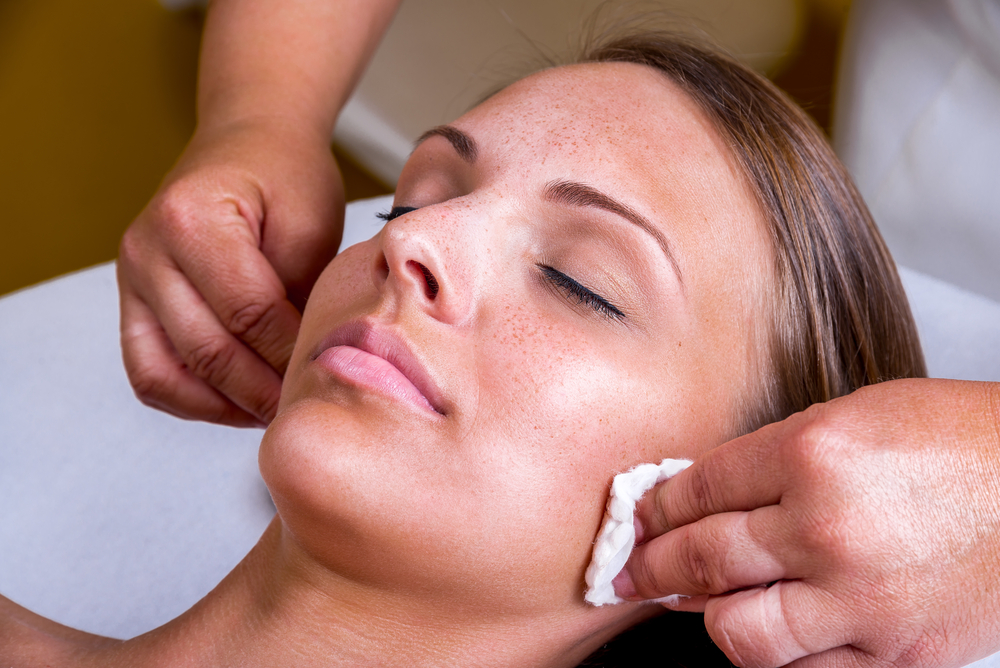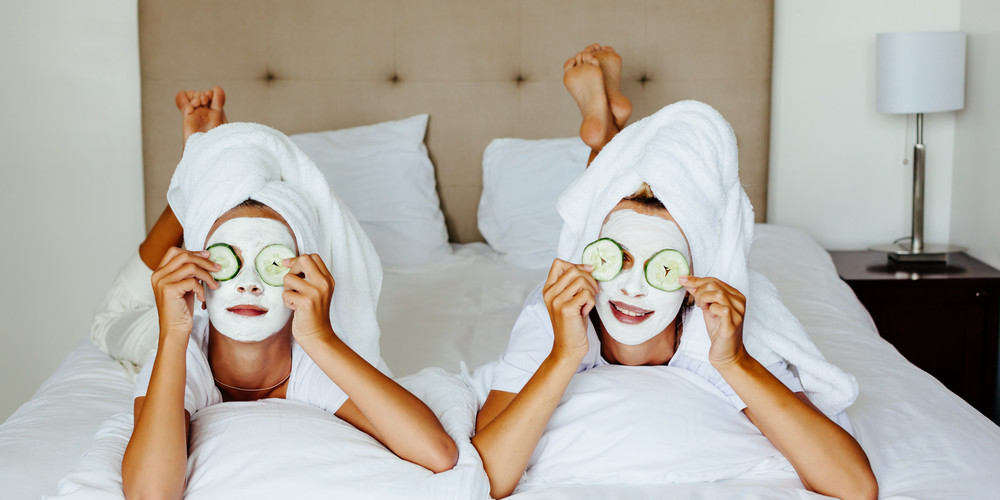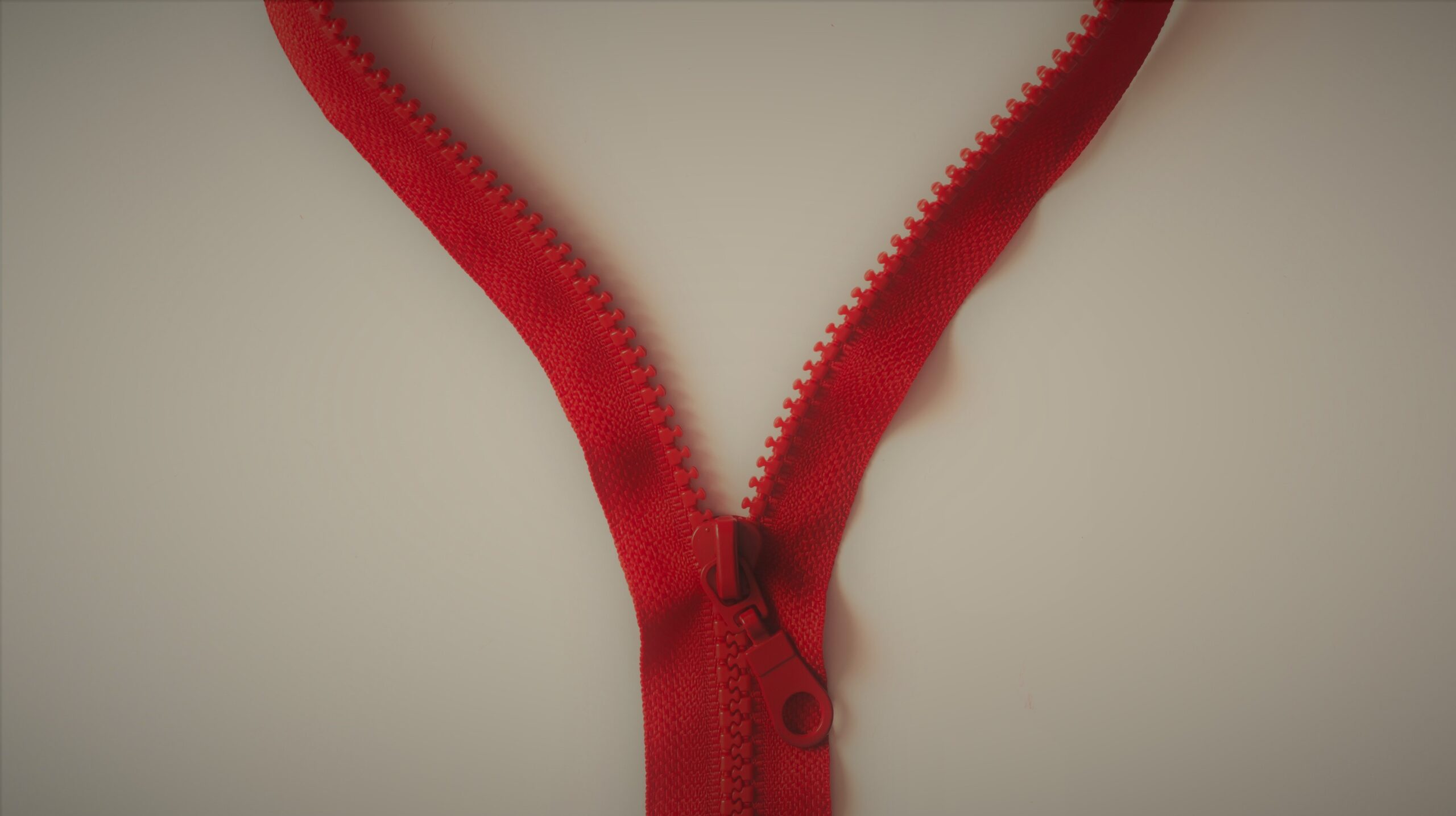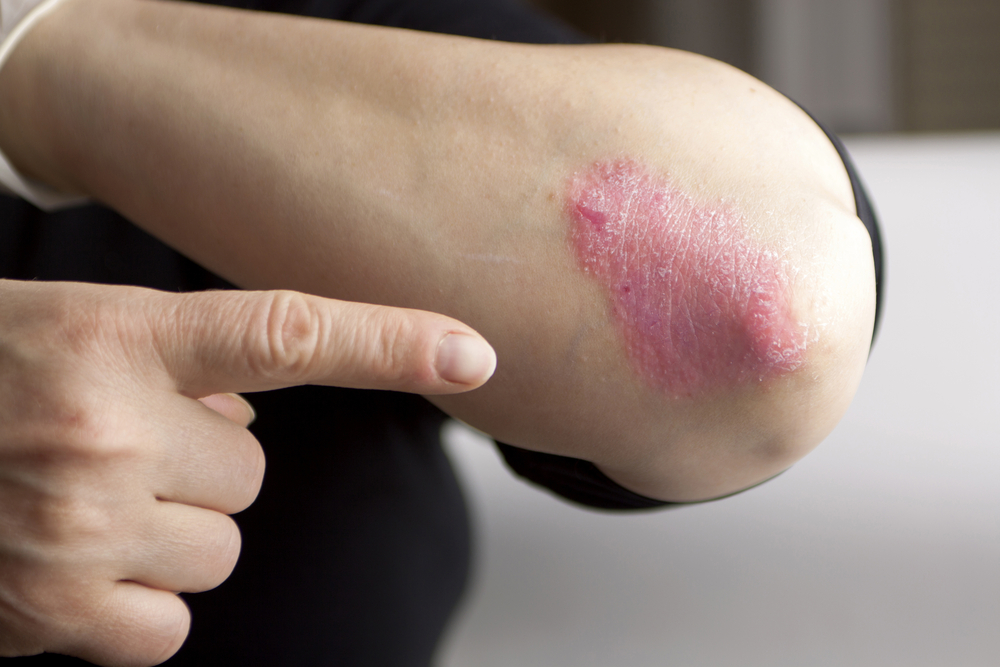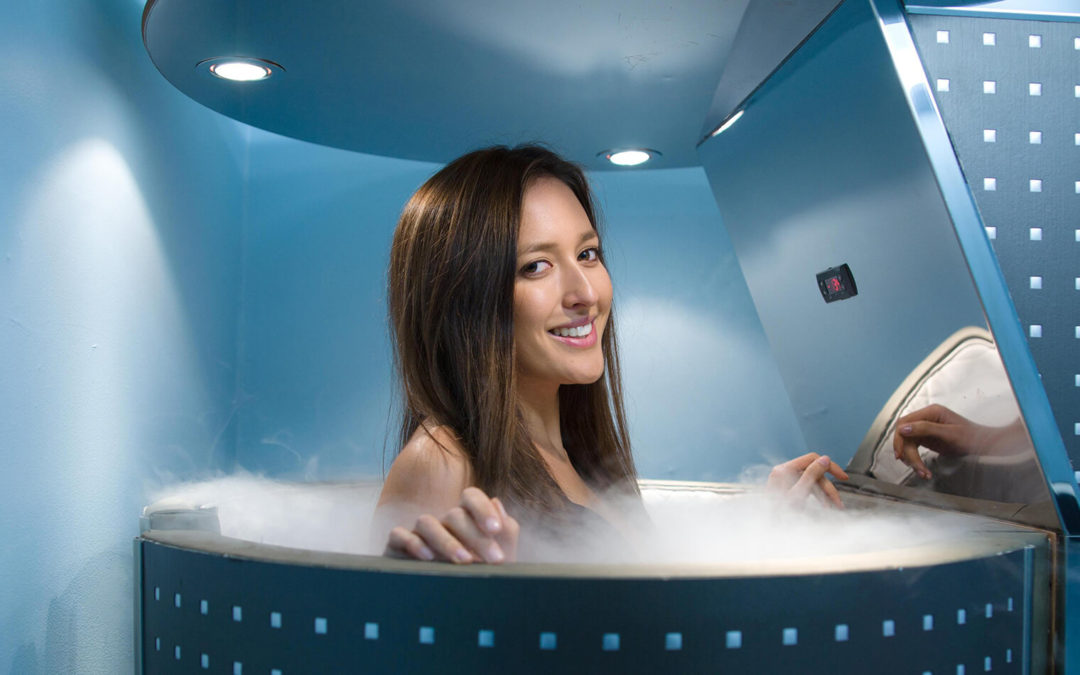Chemical peels improve the look and texture of your skin by reducing the appearance of fine wrinkles, blemishes, and enlarged pores.
Though usually used on the face, there are also certain peels that can be used for “spot treatments” to remove stretch marks, or even help revitalize the skin on other parts of the body.
In essence, a chemical formulation is applied to the skin and absorbed by the tissue. Over the next day or weeks, depending on how deep the chemical is allowed to penetrate the skin during treatment, the outer layers of skin peel off.
The objective is to cause superficial damage to these outer layers so that new, healthy skin can grow.
This guide provides you with all the information you need to choose the right chemical peel for your skin type, as well as a series of preparation and recovery tips.
A brief history of chemical peels
Chemical peels have existed for thousands of years, with the first known uses dating at least as far back as Cleopatra’s reign over Egypt.
During this period, Egyptians used alabaster, grape skin scrubs, and a variety of animal oils to improve the appearance of their skin. Women would also bathe in mild exfoliants such as wine or sour milk.
Interestingly, these ancient skincare routines used ingredients commonly found in modern chemical peels: lactic acid in sour milk, and tartaric acid found in grapes.
Modern chemical peels made their debut in the early 20th century, when Dr. George Mackee began using phenol, a carbolic acid, as a chemical peel for acne scars.
Roughly three decades later, during the 1930s, spas and health resorts started using phenol to remove facial wrinkles. Unfortunately, this experimentation left many patients scarred from the intensity of the peel.
Through the 1950s, newer ingredients were trialled and modern peels were developed. Chemicals like resorcinol, trichloroacetic acid, and salicylic acid were mixed with phenol to formulate medium and deep chemical peels.
Many of these products are still used today, along with newer ingredients, such as glycolic and pyruvic acids.
In today’s world, chemical facial peels are among the most popular non-invasive cosmetic procedures. This is due to their immediate results, affordable prices, and the fact that they are performed as a simple outpatient procedure.
How chemical peels work
All chemical peels perform the same function: they work by removing the outermost layers of skin through what is referred to as a “controlled injury.” The chosen chemical breaks down the bonds between dead skin cells, allowing them to peel and flake away.
This process reduces wrinkles, evens out minor scars and blotchy patches, and can even help to treat sun damage.
Undergoing peels on a regular basis — every 6 to 8 weeks — can also help to increase the production of collagen, one of the proteins responsible for maintaining the skin’s elasticity and structure.
Chemical peels offer optimal results when performed by a dermatologist or in a qualified professional’s clinic. While there are at-home chemical peel products you can apply yourself, these cannot reach the level of depth that a specialist can administer.
While chemical peels provide excellent results for many common skin conditions, there are also certain things they cannot achieve.
For example, chemical peels are ineffective in reducing the appearance of blood vessels, keloid scars, or sagging skin. Furthermore, chemical peels aren’t usually recommended for discoloration in patients with darker skin tones.
RELATED: Over-the-Counter vs. Professional Chemical Peels
The 3 main types of chemical peels
There are three distinct types of chemical peels, and a variety of different peeling agents. Each type of peel penetrates the skin to different depths.
The degree of depth achieved by the peel depends on the strength of the acid used as the peeling agent, the number of coats that are applied, and the amount of time the acid is given to work before being neutralized.
The deeper the peel, the more dramatic the results. That being said, deeper peels also carry a higher risk, are more painful, and take longer to heal.
Light peels
These are the gentlest variation of peel available. In fact, superficial peels are so gentle they are considered one of the few true “lunchtime” procedures — they only remove the very uppermost layer of the skin, also called the epidermis.
Light peels minimize the appearance of fine lines and wrinkles, mild acne scarring, age spots, and dry, flaky or sun damaged skin. This results in skin that looks instantly brighter, smoother, and more even in texture.
They usually contain mild alpha hydroxy acids (AHAs) or beta hydroxy acids (BHAs), and other simple organic acids found in fruits. They can be used on all skin types, and are ideal for people who want the benefits of a facial peel but don’t want all the downtime and pain associated with deeper peels.
Medium peels
Medium depth peels offer a more dramatic end result than shallower, more superficial peels. Generally using trichloroacetic acid as an active agent (TCA), these peels soak deeper into the skin. This allows them to treat issues such as sun damage, discoloration, and wrinkles.
The downside, however, is that medium depth peels require a longer recovery time and have in some cases been linked to unpleasant side effects. The face can become swollen, itchy, and reddened, with some patients reporting burning or stinging sensations that last up to an hour after the treatment.
Medium depth peels can also cause patches of brown and white skin to appear on the face during the healing process. And in rare cases, medium depth peels have resulted in scarring.
In general, recovery from medium-strength peels take about a week, but you might still be a little pink for as long as six weeks after treatment.
Deep peels
These are, by far, the strongest type of chemical peels available, penetrating far into the dermal layers of skin. Deep peels usually use carbolic acid, also known as phenol,or a concentrated, high strength TCA as their active agent.
While deep peels can provide amazing results for sun damaged skin, scarring, and deep lines and wrinkles, the procedure can be quite painful. You might also feel a bit unwell after a phenol peel, and may even need to be sedated during the procedure.
After a deep peel your face will look and feel as though it has been severely sunburned. While you should be fully healed within a matter of weeks, the redness can last for months.
The side effects can be quite dramatic: your face will remain swollen for days, after which itchy, peeling scabs will start to form. For some patients, a full two weeks of recovery are required before they feel comfortable going out in public.
The most common risks associated with deep peels are the development of permanent patches of white or bleached looking skin, and an increased risk of scarring.
Darker-skinned people, people who are sensitive to anesthesia, as well as those with heart problems, make poor candidates. It’s also important to note that anyone who decides on a deep peel treatment should be prepared for a more lengthy recovery.
Common peeling agents
All chemical peels rely on acidic solutions of various concentrations to rejuvenate the outer layers of the skin.
Alpha hydroxy acids (AHAs)
Alpha hydroxy acids (AHAs) are naturally occurring acids taken from sources such as fruits, sugar, and sour milk, and are generally used for light and medium peels.
- Glycolic acid is the most commonly used peeling agent, and comes from sugar cane. Its strength ranges from 30% to 90%, with different acidity levels. It is used in both light and medium peels to treat sun damage and wrinkles, and to improve the skin’s texture.
- Lactic acid is found in milk and naturally occurs in the skin. This is the least irritating of the AHAs and even has a natural moisturizing effect. Lactic acid is perfect for brightening the skin, as well as treating discolorations, dry or dehydrated skin, sensitive skin, and rosacea.
- Malic acid is a weaker AHA than glycolic acid and is found in apples and pears. This AHA is usually used for acne, mild sun damage, rosacea, superficial discolorations, and eczema.
- Citric acid comes from lemons and oranges and works in a similar way to malic acid. Citric acid is also commonly used to treat acne, mild sun damage, rosacea, superficial discolorations, and eczema.
- Tartaric acid is extracted from grapes. It is less irritating to the skin than glycolic acid while also providing hydration and mild exfoliation. Similar to both malic and citric acid, this AHA is used to treat acne, mild sun damage, rosacea, superficial discolorations, and eczema.
Beta hydroxy acids (BHAs)
Beta hydroxy acids (BHAs) are also simple organic acids taken from fruit sources. Although similar to AHAs, BHAs are somewhat different in their molecular structure, and therefore act on the skin in a slightly different way. BHAs are also generally used in light peels.
Salicylic acid is by far the most common BHA used in today’s chemical peels. This chemical is somewhat unique among hydroxy acids because of its ability to penetrate much deeper into the oil glands.
This allows for a high level of exfoliation without irritation, even in oily areas such as the face and scalp, which makes it ideal for treating acne and oily skin.
Fruit enzymes
Fruit enzymes are often used in light peels. Papaya, pineapple, pumpkin, or cranberry extracts can effectively peel off the outer layer of the skin.
These enzymes also have antibacterial properties, help cell regeneration and can break down oil and dead skin cells. They are best suited to treat acne, rosacea, dehydrated skin, and hyper-reactive or sensitive skin.
Retinoic acid
Retinoic acid is derived from Vitamin A and used for peels that need to penetrate deeper than either AHAs or BHAs. This peel is specifically used to remove scars, wrinkles, and dark spots.
If you choose to undergo this procedure you’ll leave your doctor’s office with the product still on your face. The peeling process will begin on the third day, and as with most chemical peels, your results will improve with multiple treatments.
Trichloroacetic acid (TCA)
Trichloroacetic acid (TCA) is stronger than the hydroxy acids used in light peels. This chemical is able to penetrate the skin deeply, which makes it useful for medium depth and deep peels.
That said, it’s often used in a lower concentration or combined with other acids for a milder peel. TCA is usually used to treat lines and wrinkles, acne scars, large pores, and hyperpigmentation.
Carbolic acid
Originally used by Hollywood stars in the 1920s to maintain their youthful appearance, carbolic acid is by far the strongest peeling agent available today.
Found in phenol peels, carbolic acid is only used for very deep peels, and is ideal for treating deep lines and wrinkles, scarring, and severe sun damage.
Because these peels penetrate so deeply into the skin they should only be performed by an experienced physician. As such, there aren’t any at-home phenol peels available on the market.
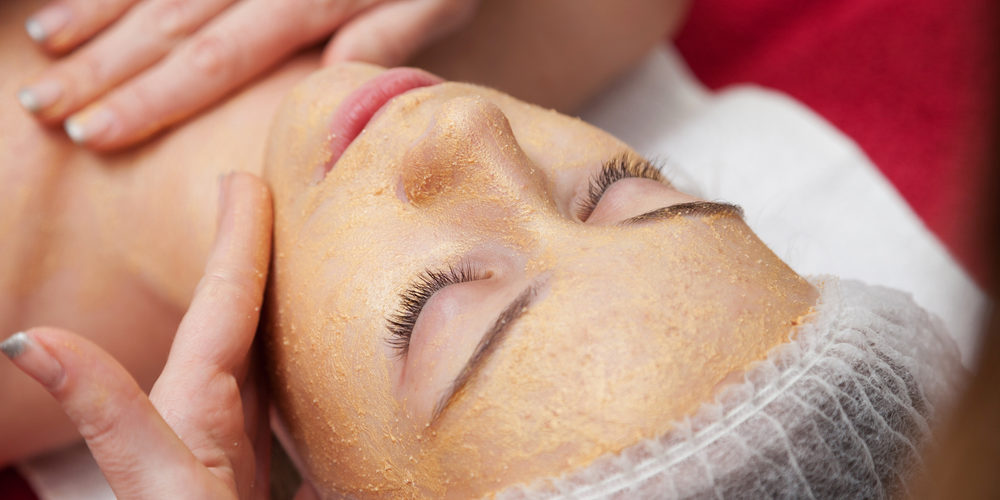
RELATED: Everything You Need to Know About TCA Peels
Top chemical peel brands
There are countless brand name products available for superficial and medium peels. Some brands that offer superficial peels include:
- MD Forte, which uses glycolic acid.
- SkinCeuticals Gel Peels, which uses both glycolic and lactic acids.
- Dermaceutic Milk Peel, which uses lactic acid.
- NeoStrata Anti-Aging Peel Solution, which uses a combination of hydroxy acids and fruit enzymes.
- Vivier Skin Peel, which uses beta hydroxy and alpha hydroxy acids.
Product brands that offer medium depth peels include:
- Obagi Blue Peels, which uses TCA.
- CosMedix Tomorrow Peel, which uses lactic acid as its main exfoliant.
- VI Peel, which uses a combination of TCA, salicylic acid, retinoic acid, phenol, and glycolic acid.
Preparing for the Peel: 10 Tips to Follow
- Review your medical history with your doctor.
You’ll need to be prepared to answer a series of questions about any current or past medical conditions, namely regarding your heart, liver, or kidneys.
You’ll also need to tell your doctor about any medications you’re currently taking, or were taking until recently, especially anything that might make your skin sensitive to the sun. Be sure to also let your doctor know about any past cosmetic procedures you have undergone.
Lastly, if you’re using a retinoid cream it’s important to tell your doctor, because this can increase some chemical peels’ ability to soak into the skin.
- Discuss your expectations with your provider.
This should include your motivations for the procedure, your expectations for the outcome, and any potential risks involved in your treatment.
It’s important that you understand exactly how many treatment you will need, how long it will take for you to fully heal, and what kind of results you can and can expect.
- Have a physical exam performed, even before trying an at-home peel.
Certain traits, like the tone and thickness of your skin, can have an impact on your results. Your physician will be able to advise you on the best products to use.
- Tell your provider if have a history of herpes (cold sores) around the mouth.
You will most likely be asked to take an antiviral medication before and after treatment. This can help prevent a viral infection, and is just one of the reasons it is so critical to discuss your medical history with your doctor beforehand.
- If you decide on a light peel, you might be asked to use a glycolic acid lotion.
Using a lotion for two weeks before your procedure will allow you to determine if you’re sensitive to glycolic acid before the actual peel. It will also prepare your skin and ensure that it peels evenly.
- Try using a retinoid cream before a light or medium depth peel.
This can help shorten the treatment time and speed up the recovery process.
- Certain products can help prevent the skin from darkening unevenly.
Depending on your skin tone, your doctor might recommend that you start using a bleaching agent along with a retinoid cream before and after your treatment.
- Make sure you’re always protected when exposed to the sun.
You’ll need to use sunscreen and perhaps a wide brimmed hat for at least 4 weeks before your treatment.This helps prevent uneven or irregular pigmentation in the treated areas.
Be sure to discuss appropriate sun protection with your doctor.
- Avoid certain cosmetic treatments and hair removal products a week prior to your procedure.
Specifically, avoid bleach and facial scrubs (unless otherwise directed by your doctor), and refrain from waxing or using hair removal creams or lotions, such as Nair.
- If you’re going to be sedated for the peel, have someone take you home afterwards.
Many medium and deep peels use some form of sedation, and it is unlikely you will be able to drive afterwards because of the lasting effects of the anesthesia administered.
Recovery timeline
The exact recovery time required after a chemical peel depends on the strength of the treatment.
Light peels
These mild peels have virtually no down time, so you’ll be able to see results after only one session. With each additional treatment you’ll notice more improvement, until your skin is new, healthy, even-toned, and smooth.
In the vast majority of cases light peels have no real recovery time to speak of. Your skin will most likely feel a little flaky or even mildly irritated after a glycolic acid or other AHA chemical peel, but you’ll be able to return to work immediately.
If you had your peel carried out professionally, your provider will give you a set of guidelines to ensure the best results. For example, patients are often instructed to use a gentle cleanser and a recommended moisturizing lotion, and to stay out of the sun.
Unlike deep chemical peels, which usually only require a single treatment, patients who opt for light peels will need to undergo about five to eight sessions to reach their goals.
The formula and strength of the peel, the number of treatments needed, and the frequency at which treatments are administered will all be customized based on your own goals and skin characteristics.
Medium peels
After a medium depth TCA peel, a shallow crust forms over the treated area, and slowly flakes off over 3 to 7 days. The fresh new skin that is revealed might be a little pink or reddish for a few days, but should fade back to your normal skin tone within a week.
Full healing typically takes one week, at which point new, younger-looking skin is revealed with significantly improved texture, color, and appearance.
Some mild swelling is common after a medium peel and should not be a cause of concern. There isn’t usually much pain, and any discomfort lingering after the treatment is easily controlled with pain medication. As in the case of a light peel, you’ll be allowed to return to all your normal activities right away.
That being said, there might be some remaining redness for up to a week after treatment, so many people choose to stay home until they are completely healed.
Everyone’s skin is different, and your treatment plan will be unique to you. However, most patients undergo at least two or three medium depth peel treatments before meeting their goals. The number of treatments you’ll need, and how far apart they are spread, will depend on your goals, the condition of your skin, and a number of other factors, such as your medical history.
During your short recovery period, it’s important that you follow all the instructions provided by your doctor. These will include precautions like limiting the amount of time you spend in the sun.
Deep peels
The chemicals used for the deepest peels are the most intense. This means that the new layer of skin can take a week or longer to appear, and complete healing might take more than two full months. However, only one treatment is usually required.
Deep peels are the most advanced and painful chemical peel treatments, and also have the longest recovery time. After a deep peel, your face will be swollen, red, and uncomfortable. A few days after your treatment, a crust will form over the treated skin. This crust will flake off within 7 to 10 days, revealing a new, healthy layer of pink skin.
The pink shade usually slowly fades over 2 to 3 months, leaving you with a clear, smooth complexion.
If you decide on a deep phenol peel, it’s important to keep in mind that you will need to avoid exposure to the sun for awhile. This means you’ll need to take extra special precautions against possible sun damage after your treatment. Avoid direct sunlight as much as possible, and always use a strong sunblock.
After all your healing is complete, your skin will be much clearer, have improved elasticity, and deep wrinkles and severe discolorations will be remarkably improved. A deep chemical peel has the ability to make your face look younger, with results that can last decades so long as you protect yourself from sun damage.
After the Peel: 10 Recovery Tips
- Be gentle with your skin.
Instead of using your usual washcloth for your face, try switching to something more gentle, like a baby washcloth or facial sponges. Your skin can feel easily irritated post-peel, and the rough texture of your normal washcloth might be too rough.
- Keep your outdoor activities to a minimum during your recovery.
As the top layer of skin flakes and peels off, the new, vulnerable and immature cells below will become exposed to dangerous UV rays. Limit your time in the sun as much as you can.
- Make sure you wear sunscreen with a high SPF every day.
Your skin will be hypersensitive to UV exposure because the tough, outer layer won’t be present to provide adequate protection. A high spectrum sunscreen protects new skin from damage as it heals, regardless of the weather.
- Try using soothing products that contain chamomile, azulene, or sea whip.
If your skin is red or sore, these ingredients can comfort the skin while reducing inflammation. If you’ve just had a light peel, that redness will be so mild that you’ll look more like you’re glowing, which is a good thing! In fact, some people love getting superficial peels just for this reason.
- Don’t pick at flaking skin.
The entire point of a chemical peel is to effectively “burn” off the dry and damaged surface layer of skin, revealing healthy, younger-looking cells beneath. To do this, that outer layer has to be shed. This is the most uncomfortable part of the process but it’s best to be patient and allow it to happen on its own.
Picking off dry and flaky skin when it’s not ready to be shed can lead to scarring, unnecessary redness, and even hyperpigmentation – a darkening of the skin.
- Be careful with your moisturizer.
It’s tempting to over-moisturize or apply a heavy moisturizer in an effort to compensate for post-peeling dryness, but too much can prevent the skin from peeling off.
The purpose of a chemical peel is to peel the skin, so let it peel off naturally. Over-moisturizing can lead to poor results and a longer recovery period.
- Don’t exfoliate!
It’s important to just allow your skin to shed naturally through the recovery period. Using a facial scrub or acid will only irritate the new skin more, and can even lead to scarring.
- Wash your face with a gentle soap or cleanser twice daily.
This helps reduce oils on the skin, and removes bacteria and dead cells that build up over the course of the day. Don’t rub your skin too much while you wash.
- While your skin is peeling endeavor to minimize facial expressions.
Moving the muscles in your face excessively can cause the skin to crack before it’s ready, leading to poor results. This isn’t the time to see a comedy or visit your dentist!
- If problems arise, call the office of your provider right away.
You’ll want to resolve an unexpected irritation or a possible infection as soon as possible. Don’t wait until your next appointment. This is especially important advice if you think you might be developing a cold sore on your lip.
Risks and complications
In general, the deeper the chemical is able to penetrate into the skin, the higher the risk of complications and side effects. Chemical peel side effects are generally rare when the procedure is performed by an experienced practitioner, but they can include:
- A stinging or burning feeling. Even the lightest peels can cause temporary stinging. For most patients, this sensation isn’t usually painful, and some individuals even like the feeling.
- Redness. This is a normal part of the post-peel healing process. Redness usually fades within a few hours for light peels, but might last as long as several months for medium and deep peels.
- Scarring. Though rare, chemical peels can cause scarring, usually on the lower half of the face. Antibiotics and steroids can be used to minimize the appearance of scars.
- Crusting and skin irritation. The deeper the peel, the more likely a crust will form as the old layer of skin flakes away and new skin appears.
- Flaking and peeling. These are perfectly normal side effects of most chemical peels and are usually mild and temporary. Make sure you don’t pick at this flaking and peeling skin.
- Changes to your skin color. Skin darkening is more common with lighter peels, while skin lightening is more common after a deep peel. Overall, changes in skin pigmentation are more common among patients with darker skin color. Unfortunately, these changes can be permanent.
- Infection. Chemical peels can cause a herpes infection to flare up, leading to cold sores. More rarely, chemical peels will cause a bacterial or fungal infection as well.
- Heart, kidney, or liver damage. Deep chemical peels use carbolic acid, which can cause an irregular heartbeat and even damage the heart muscle itself. Carbolic acid can also cause damage to both the kidneys and liver.
Chemical peels vs microdermabrasion
Both microdermabrasion and chemical peel treatments use exfoliation to maintain healthy skin by keeping it free of dead skin cells and other materials. The main difference between the two is the method of exfoliation.
Microdermabrasion uses physical exfoliation to literally scrub away dead skin cells, oil, and other debris from the surface of the skin. Chemical peels, on the other hand, rely on a chemical process that breaks down the bonds between dead skin cells, allowing the outer layer of skin to flake and peel off on its own.
In general, peels are able to penetrate into the deeper layers of the dermis, allowing them to treat certain conditions more efficiently than resurfacing techniques like microdermabrasion. Chemical peels treat and exfoliate thick, oily, and acne-prone skin more effectively. They also tend to provide better results for stubborn or deep hyperpigmentation, sun-damaged skin, and skin lacking collagen.
Blackheads and enlarged pores are common skin concerns that are usually most noticeable around the forehead, nose, and cheeks. Unfortunately, neither microdermabrasion or chemical peel treatments actually shrink your pores as their size is determined by the genes you inherited from your parents. However, both treatments can make them less prominent, while also clearing up any clogging and removing extra oil and other debris.
In the end, the treatment that is most appropriate for you is something you can determine by having a conversation with your provider. It really depends on what you want to achieve and your budget.
Be sure to speak with your doctor or dermatologist to decide which treatment is best suited to your unique needs.
RELATED: 6 Homemade Chemical Peels That Are Guaranteed to Deliver Results
Chemical peels vs laser resurfacing
Both chemical peels and laser resurfacing will help refresh the appearance of your skin, reduce the appearance of fine lines, minimize scarring, and fix skin discoloration issues caused by sun damage.
Either treatment is able to greatly improve the appearance, tone, and texture of your skin. The most significant difference between the two is the technique used, but there are several other important differences as well.
Rather than using a chemical reaction, or even physical exfoliator like microdermabrasion, laser resurfacing uses a specialized medical laser to break up dead skin cells, removing them from the surface of your skin. This causes the skin to immediately contract and tighten, which also helps encourage the production of collagen.
Over the course of 6 to 12 weeks, the skin continues to improve on its own. The treatment usually takes between 30 and 60 minutes, depending on the surface size of the area to be treated. Multiple treatments are typically needed for the best results. Recovery usually takes about 5 days, during which time you need to stay indoors, and should avoid using any makeup.
Other things to consider when deciding between these two treatments include the price, treatment flexibility, their ability to treat acne, and the final results you can expect.
- Price
Light chemical peels usually cost several hundred of dollars, with the price increasing proportionally to the level of penetration each chemical can provide. Financially, this can reach into the thousands for the deepest peels, but the deeper the peel, the fewer treatments are usually needed.
Laser resurfacing, on the other hand, can cost between $1,500 and $3,000 and may also require multiple treatments to reach your goals.
- Treatment flexibility
When it comes to the flexibility of these treatments, laser resurfacing has the advantage. Laser resurfacing is able to penetrate the skin to a very specific depth in one area, and a very different depth in another. This results in less pain during the treatment, and often a quicker recovery period.
As for chemical peels, different strength acids cannot usually combined for different parts of the face, and the depth of the acid’s penetration cannot be altered or adjusted during treatment.
- Acne
Chemical peels can treat acne well, especially medium and deep peels. Laser resurfacing can’t. In fact, patients suffering from cystic or serious acne are poor candidates for laser resurfacing as it can aggravate infections.
- Results
Both deep chemical peels and laser resurfacing offer amazing and dramatic results. Patients of both treatments are usually very satisfied with their outcomes. Laser resurfacing has the added benefit of continuing to improve the skin over the course of the new few months. This is due to the laser’s ability to promote collagen production in the skin.
Light and medium peels can also give fantastic results, but they usually require more than one treatment to correct certain skin imperfections or to maintain results.
Frequently asked questions
Are chemical peels safe?
Yes. In the vast majority of cases adverse reactions or negative side effects are extremely rare. However, it’s important to note that the risks and side effects increase as the chemicals penetrate deeper into the skin. Basically, the lighter the peel, the lower the risk of complications, while the deeper the peel, the higher the risk.
Is anesthesia required?
Light chemical peels, whether performed at a medi-spa, doctor’s office or at home, involve so little discomfort that no anesthesia is required, and no pain medication is needed afterwards.
Medium peels do not usually require any anesthesia; some solutions even enact a numbing effect. Sometimes a mild pain medication is given before the procedure begins, but it’s often unnecessary.
Deeper peels, on the other hand, can cause some discomfort, and often require sedation. The newest of the modern deep peel formulas can be performed under oral or intravenous sedation, usually used in combination with local anesthetic injections to lessen the burning sensation.
Modern deep chemical peels offer doctors more options with respect to how deeply they penetrate the skin, so it’s important to find out the specifics of your procedure, and discuss sedation options ahead of time.
Who is an ideal candidate for this treatment?
Generally speaking, people with fair skin and light hair make the best chemical peel candidates. That being said, patients with darker skin pigmentation can also achieve excellent results.
Smoking can have a negative impact on almost any cosmetic procedure, and chemical peels are no different. If you are a smoker, you will be asked to cease smoking at least a couple of weeks before and after your treatment.
In most cases, current or former Accutane users should avoid chemical peels altogether. If you suffer from large or unusual scar formations, like keloids, chemical peels might not be the best option for you, and your practitioner might recommend a different approach.
Be sure to discuss your medical history with your provider well ahead of your treatment to ensure that you are a good candidate for a chemical peel.
Will my skin literally peel off?
Yes. All chemical peels work by removing the outer layer of skin. After treatment, your skin will gradually flake and peel off, revealing the new, fresh layer beneath.
That being said, it’s important that you don’t pick at or peel away any skin. It’s best to just allow the skin to flake and shed by itself; picking at it can cause scarring or hyperpigmentation.
How much do chemical peels cost?
The cost will depend on the type of chemical peel you choose to have.
- Professional light chemical peels are usually priced between $300 and $500.
While this is easily the lowest price range for the three types of professionally applied peels, light peels often needs to be repeated several times. Keep this in mind when calculating your final cost.
- Medium chemical peels usually cost between $800 and $1,500.
Again, remember that medium peels often need to be repeated every two to three months.
- Deep chemical peels typically cost $2,500 to $6,000.
They are the most expensive of all three types, but typically only need to be performed once. This price includes consultation, anesthesia, and follow-up care.
- At home products are also an option.
These are mostly light peels, so they need to be repeated often. Prices range from as little as $10 to as high as $200 or more. It’s important that if you’re considering using a DIY chemical peel to research it thoroughly and make sure it’s suitable for you.
How do I know which peel is right for me?
With all the information available, and the range of peels to choose from, determining the right peel for you can be overwhelming. The first thing you can do to decide which peel will be the best option for your needs, is to carry out some research on chemical peels in general. This will give you a basic understanding of how each works, and what you can expect.
Secondly, you need to consider why you’re considering a peel in the first place. Are you hoping to treat acne, age spots, discolorations, or perhaps restore a youthful glow? Different chemicals used for the different peel depths have certain properties that may be better for your goals, so it’s important to know what you want the treatment for.
For example, salicylic acid peels are usually better for oily and acne-prone skin, while glycolic acid is better for treating age spots, wrinkles, and fine lines.
Thirdly, it’s usually a good idea to start with the more mild chemical formulas. You won’t know what your skin can tolerate until the treatment begins, so it’s best to start light, and work your way up if necessary.
And lastly, speak with your provider. She or he will likely be able to advise you on what is most suitable given your needs. A frank discussion regarding your goals as well as your medical history is usually enough information for them to be able to help you choose the most appropriate chemical peel.
Can chemical peels be used on areas other than the face?
Deep peels are only appropriate for use on the face, but the skin on any other part of the body can be treated with a mixture of chemicals used for light and medium peels.
In general, the chemical solution used for body chemical peels are made up of a combination of TCA, the main chemical used in medium peels, and glycolic acid, the principle ingredient in light peels. This solution is usually designed to be a little stronger than the solution used for light or medium peels, but more mild than the solution used for deep facial peels.
Similar to facial chemical peels, body peels can treat sun damaged skin, uneven coloration, and improve your skin’s texture. They’re also often used to diminish the appearance of stretch marks. Common areas that are treated include the hands and chest (décolletage). The stomach and upper arms may also be treated.
Is a chemical peel a facial?
Chemical peels and facials are two different things. While both are great for your skin, chemical peels contain medical grade ingredients that are designed to resolve specific complexion problems like fine lines, hyperpigmentation and roughness.
Facials, on the other hand, don’t contain any medical grade ingredients nor do they resolve complexion issues.
How long does a chemical peel last?
Generally speaking, the deeper the peel, the longer lasting the results. The results of a chemical peel last for as long as the effects of the environment, aging and your lifestyle are mitigated. Healthy lifestyle habits will help to preserve your results. And remember — always protect your skin from the sun!





